The number of blockchains and distributed ledger networks has exploded in the last year. As established networks like Bitcoin and Ethereum are hitting both economic and technical scaling limitations, migration to other chains is becoming a necessity for many developers, miners, and entrepreneurs.
Diverse networks competing for a share of the crypto market have unique advantages and disadvantages. As time goes on, it is becoming clearer that there is no perfect solution to all blockchain needs. There are trade-offs that have to be made in development to optimize a blockchain for specific purposes.
For example, IOTA is trying to perfect a system for payments on the Internet of Things, VeChain is specializing in supply chain management, and Stellar wants to create a global payments network that will be highly functional in low latency situations like rural Africa.
The best solution to these specific needs is simple: tailor individual networks to the individual needs that they need to serve.
Why Do We Need an Interoperability Solution?
Let’s fast forward 20 years from now. Imagine we have a world where blockchains or other cryptographic networks did to the banking and financial services industry what email did to the post office.
Different blockchains, ledgers, or DAGs specialize in different types of transactions, and handle different amounts of data and processing power. There are also networks especially for different groups — labor unions, religious and community organizations, and national governments all have their own chains and networks.
Some networks may be independent because of specific technical needs; others for political, cultural, or social reasons.
Of course, these networks will need to interact with each other. Delivery drones will need to talk with the blockchains of various warehouses and distribution centers, each running on separate blockchains. A corporation might pay its employees exclusively in its own proprietary currency.
How Much is Chain Interoperability Worth?
In the early years of Bitcoin (although many say it’s still the early years) people used to talk about the million dollar bitcoin. Although a million dollar bitcoin is still a distinct possibility, for the most part the big rally of 2017 put an end to those dreams.
Ethereum ate up a big portion of Bitcoin’s market share, and as Bitcoin’s price skyrocketed, so did transaction fees. It became increasingly clear that Bitcoin was not going to become the global currency.
There’s little doubt at this point that crypto is eventually going to capture trillions of USD worth of market. If someone can get the interoperability of cryptographic records right, the demand for this solution will be huge. If that solution is token-based, that demand, of course, will drive price.
Even if a solution was not based on a proposition that supports token value, any fee-based solution would also be huge.
Gold Rush
Finding a definitive interchain solution may well be the next motherlode of the blockchain gold rush. Interchain communication may be THE ultimate scaling solution for the blockchain ecosystem, and the gateway to mass adoption.
Currently, the main means of transferring value between chains is exchanges. This is also the most profitable part of the entire crypto ecosystem — and the most vulnerable.
With every wave of growth, more exchange hacks pop up in the news. This makes the uninitiated masses reluctant to have anything to do with cryptocurrency. Furthermore, there is presently no way at all for dapps on different chains to interact with each other.
Given this state of affairs, it is not surprising that there are a lot of people working on finding the optimal solution. And the number seems to be increasing with each passing month.
Following is a list of 11 major projects working on interoperability solutions. This is not meant to be an analysis of the technology. As is often observed, it is usually not the best technology that achieves mass adoption, but the one that is “good enough” and reaches the necessary critical mass first.
11 Projects in the Race Towards Cross-Chain Communication
Blocknet
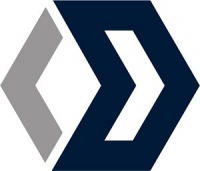
Blocknet is developing a fully decentralized exchange as a solution for interchain communication. There are four components to an exchange: deposits, order broadcasting, order matching, and the actual exchange of coins.
Blocknet is working on decentralizing all of them; and if successful, it would be the first DEX to do so. The BLOCK currency will be required to become a node in the network and thereby collect fees (Proof-of-Stake).
Blocknet has already released a beta version of their DEX. According to the developers, it has been optimized to serve as infrastructure. This means users could be using Blocknet via other apps without even knowing it.
Cosmos

Cosmos is currently one of the biggest names in the interoperability race. Ethan Buchman, the author of the Tendermint Byzantine Fault Tolerance protocol, is one of the main personalities behind Cosmos. He developed Tendermint as an MS Thesis with the intent of creating an improved Proof-of-Stake protocol. Since then, Tendermint has been adopted by dozens of different projects.
Cosmos aims to become a “hub” or nexus of a large number of projects. It has achieved this by releasing a software development kit that promises high levels of scalability to blockchain projects. At the time of writing, actual functionality of the network was still “soon.”
Cosmos is being funded by a non-profit registered in Switzerland (presumably for political and banking reasons) called the Interchain Foundation (ICF). The ICO originally raised more than 14,000 bitcoin. At the time, the valuation would have been between US$150-200 million. Currently those bitcoin are worth close to US$1 billion.
Polkadot
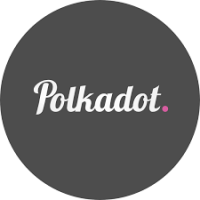
Another one of the most well-known ventures on interoperability, Polkadot is associated with Gavin Wood, one of the founders of Ethereum. It makes sense that Polkadot, coming from an Ethereum developer, has a lot of focus on transferring smart contract data.
Polkadot raised 485,000 ETH in its ICO, worth about US$140 million at the time, or over US$220 million at the time of writing.
Its mainnet is scheduled to launch in Q3 2019, and the tokens will not be tradable until then. The structure of their ICO seems to indicate they are sincerely interested in making the technology work and are not just trying to make money.
That being said, Polkadot is undoubtedly one of the frontrunners in this list. Solidity has already become something of a standard internationally for smart contracts. Having strong links to the broader Ethereum community means Polkadot is likely to have a share of Ethereum’s first mover advantage.
Aion

Aion raised US$23 million in their crowd sale, and launched their mainnet in April.
Overall, there is not much that makes Aion really stand out among the competition, except perhaps its long-term plans on integrating AI into a consensus model.
What is more promising, however, is the fact that it was created by NUCO, a Canadian company developing enterprise blockchains. NUCO has Vitalik Buterin as an advisor, and connections to both government and major corporations in Canada. It is also a member of the Interoperability Alliance.
Since interoperability protocols are aiming to establish standards, government connections and experience with regulatory compliance are a big plus.
Lamden
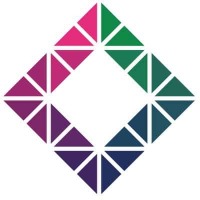
Lamden is probably one of the more underrated projects on this list. Their focus is on providing development tools for enterprise blockchains, but chain-to-chain communication is also a major component of the project.
Lamden is developing a smart contract repository which can be integrated with any of the various promising blockchain application platforms currently under development, including Ethereum, EOS, NEO, Lisk, and others.
They have a strong team and have hit a number of significant milestones including successful atomic swaps. Considering this, the TAU token’s ratio of price to overall supply seems low relative to the quality of the project.
Metronome

One of the key team members of Metronome is Jeff Garzik, which could be seen as a big plus or minus, depending on who you ask. Metronome stands out among interoperability projects with a plan to create tokens that can simultaneously exist on multiple blockchains. This would mean tokens that would theoretically be able to survive the death of a blockchain.
Metronome is one of a few tokens that has actually seen an increase in value over the past few months. This is not necessarily a reflection of the quality of the project, but is impressive nonetheless.
The ICO only raised US$12 million, but with the team behind it, it is sure to attract supporters.
ICON
![]()
At the time of writing, the Korea-based ICON is #23 among cryptocurrencies in terms of market capitalization, which is the highest market cap of any project working on comprehensive interoperability.
ICON is building an application platform and an interchain communication protocol. They are a member of the Interoperability Alliance. One of the big concerns in this space at this time is how blockchain services will deal with government regulations. ICON is working on a comprehensive blockchain-based ID verification system, which could eventually serve as a unified account for healthcare, university, and other applications.
ICON’s answer to Tendermint is the Loopchain. According to their whitepaper, it has reached up to 9,000 transactions per second on testnets. The network reaches this speed by using smaller groups of trusted nodes to verify transactions.
Governance is an issue that has been a major issue among blockchains, and ICON has a well-thought out structure that rewards network participants for contributions according to an AI algorithm developed by their parent company, Dayli Intelligence.
ICON has been hitting milestones and forming partnerships with major corporation and is definitely one of the best positioned projects on this list.
Wanchain
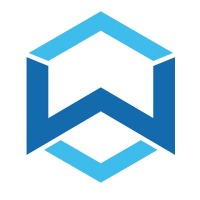 Wanchain raised $36 million in their crowdsale, ranked 45th on CoinMarketCap at the time of writing, and seems to have some good momentum.
Wanchain raised $36 million in their crowdsale, ranked 45th on CoinMarketCap at the time of writing, and seems to have some good momentum.
The China based team is going for it all — cross-chain communication, an application platform, and anonymity. Their main focus is on providing infrastructure to make financial services accessible in a distributed manner across all existing blockchains.
This means they would enable even individuals or small groups to compete on a global level with established banks.
The team has a strong network of connections, and is a member of the Blockchain Interoperability Alliance. Technically speaking, the team has enough experience to have as good a chance of coming up with a good solution as anyone.
ARK
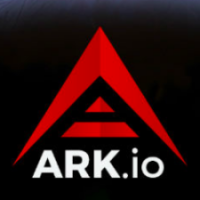
Ark is one of the more ambitious projects in this space, with a range of planned features and a big community of supporters.
In addition to interchain communication, they want to automate the creation of new blockchains integrated with their system via “push-button” blockchain deployment. They are also nearly finished integrating support for a wide variety of programming languages. This is intended to make ARK more accessible for developers who may favor certain languages.
Ark’s ICO raised about 1,200 BTC, worth around US$1 million at the time and valued at US$8 million at the time of writing. They may not have raised as much money as the competition, but they have been working on interchain communication as long or longer as anyone.
Quant Network
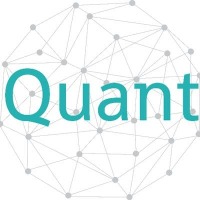
Concentrated in the UK and EU, Quant Network is another entrant aiming to accomplish interoperability goals. They have the distinction of having claimed an EU patent for an interchain communication protocol. Quant also has a catchy name for their platform: the “Overledger.”
Like many of the other teams mentioned here, they appear to be highly qualified and well connected. One positive of the Quant Network is that their developers have extensive cybersecurity background. This is critical with an interchain protocol since the “attack surface area” will increase with interchain communication.
Their ICO raised US$11 million. Quant Network is also part of the Accord Project, an open source software consortium working on technical and legal standards for blockchain tech.
Block Collider

Block Collider successfully raised their goal of US$7 million in April 2018. It claims to be different from the competition in that it has no validators. Validators are witnesses who have to confirm the authenticity of transactions on the various chains.
Their whitepaper does appear to have some novel ideas, and philosophically they may win some supporters for working toward decentralization.
On the downside, the team is relatively small and inexperienced, especially compared to the competition. Also notably absent is the strong network of connections and partnerships that are likely to facilitate widespread adoption of an interchain protocol.
Networking: the Key to Successful Networks
One of the most important elements behind the eventual success of any interoperability protocol will likely be alliances. An interoperability protocol is inherently more political than an ordinary distributed ledger, because any such protocol will work best with the the cooperation of the networks that are participating in it.
This issue of alliances stands out among the competitors for interoperability. Cosmos has attracted a whole host of projects working with Tendermint. They also have the biggest capital reserves, but the number of developers working with Cosmos small compared to Ethereum. Given the links between Polkadot and Ethereum, this could translate to an advantage for Polkadot.
Up against this kind of competition, it is understandable that Aion, Icon, and Wanchain decided to form an alliance.
It is essential when looking at individual projects to consider their position in this constellation of alliances. Alliances to corporations and governments are also important to watch for, because regulatory environment will undoubtedly play a role in the success of any of these projects.
The solution that wins out is ultimately going to be the one that provides the most utility to end-users. It is also the indicator to watch for as time goes on. This applies to both transactions and applications on a given network.
This means that as with individual blockchains, the best way to keep up with what is going on with interoperability will be to actually use the applications built on top of the competing protocols.
A Rocky Road Ahead
Whichever system becomes the standard for interchain communication will be a great thing for blockchain as a whole. If there is going to be one industry standard protocol akin to TCP/IP, it’s going to take a while to get there. Because the basic substance of blockchains is money, cooperation will be much more difficult than with the birth of the internet.
In the case of TCP/IP, everyone involved had a common interest in establishing an information sharing protocol, because the more networks linked together, the higher the overall value of the network was for everyone. Now, however, many of these projects have native tokens which will rise and fall, enriching or impoverishing the developers and investors as good or bad news comes out.
The competition in this space is fierce, but blockchain and distributed ledger tech is probably the most significant technological development since the printing press (and maybe even a bigger deal than the printing press), so the frontiers are wide.

